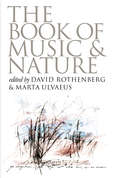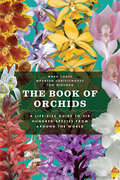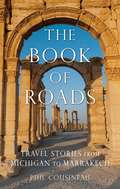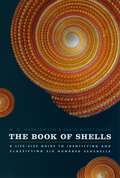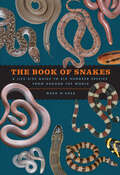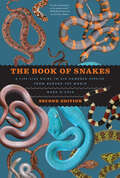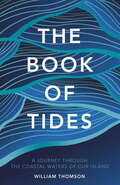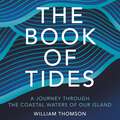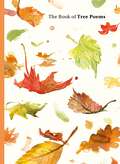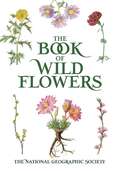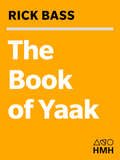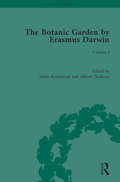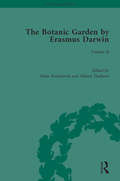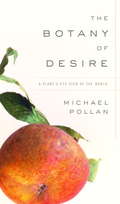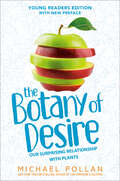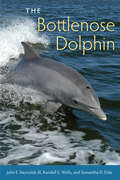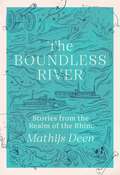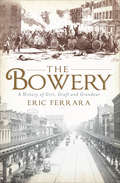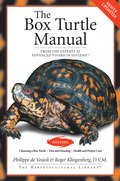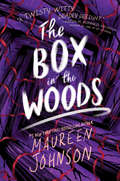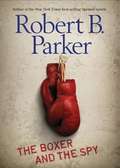- Table View
- List View
The Book of Music and Nature: An Anthology of Sounds, Words, Thoughts (Music Culture)
by Marta Ulvaeus David RothenbergThis innovative book and online CD, assembled by the editors of the renowned periodical Terra Nova, is the first anthology published on the subject of music and nature. Lush and evocative, yoking together the simplicities and complexities of the world of natural sound and the music inspired by it, this collection includes essays, illustrations, and plenty of sounds and music. The Book of Music and Nature celebrates our relationship with natural soundscapes while posing stimulating questions about that very relationship. The book ranges widely, with the interplay of the texts and sounds creating a conversation that readers from all walks of life will find provocative and accessible.The anthology includes classic texts on music and nature by 20th century masters including John Cage, Hazrat Inrayat Khan, Pierre Schaeffer, Rainer Maria Rilke, and Toru Takemitsu. Innovative essays by Brian Eno, Pauline Oliveros, David Toop, Hildegard Westerkamp and Evan Eisenberg also appear. Interspersed throughout are short fictional excerpts by authors Rafi Zabor, Alejo Carpentier, and Junichiro Tanazaki.The virtual CD at http://www.wesleyan.edu/wespress/musicandnaturecd/ includes fifteen tracks of music made out of, or reflective of, natural sounds, ranging from Babenzele Pygmy music to Australian butcherbirds, and from Pauline Oliveros to Brian Eno.
The Book of Orchids: A Life-Size Guide to Six Hundred Species from Around the World
by Tom Mirenda Mark Chase Maarten Christenhusz“Clear, informative text. It is a superb production, reminding us of the astonishing diversity of these plants.” —Times Literary SupplementOne in every seven flowering plants on earth is an orchid. Yet orchids retain an air of exotic mystery—and they remain remarkably misunderstood and underappreciated. The orchid family contains an astonishing array of colors, forms, and smells that captivate growers from all walks of life across the globe. Though undeniably elegant, the popular moth orchid—a grocery store standard—is a bland stand-in when compared with its thousands of more complex and fascinating brethren, such as the Demon Queller, which grows in dark forests where its lovely blooms are believed to chase evil forces away. Or the Fetid Sun-God, an orchid that lures female flies to lay their eggs on its flowers by emitting a scent of rancid cheese.The Book of Orchids revels in the diversity and oddity of these beguiling plants. Six hundred of the world’s most intriguing orchids are displayed, along with life-size photographs that capture botanical detail, as well as information about distribution, peak flowering period, and each species’ unique attributes, both natural and cultural. With over 28,000 known species, the orchid family is the largest and most geographically widespread of the flowering plant families. Including the most up-to-date science and accessibly written by botanists Mark Chase, Maarten Christenhusz, and Tom Mirenda, each entry in The Book of Orchids will entice researchers and orchid enthusiasts alike.“A luscious coffee-table tome.” —Nature
The Book of Roads: Travel Stories from Michigan to Marrakech
by Phil CousineauCousineau's wanderlust has driven him to visit nearly 100 countries as a backpacker, documentary filmmaker, travel writer, photographer, and art and literary tour leader. For him, travel gives us what his mentor Joseph Campbell called "the key to the realm of the muses." As author of the best-selling travel book The Art of Pilgrimage, Cousineau continues to crisscross the world as a travel writer, filmmaker, and host of Global Spirit. The Book of Roads: Travel Stories from Michigan to Marrakech is the culmination of a lifetime of travel experiences, from the steel factories of Detroit to headhunting villages in the Philippines, the war-torn villages in the Balkans to the river roads of Canada once traversed by his voyageur ancestors. His rhapsodic travel stories place him in the league of fellow travelers who are also masterful writers, such as Pico Iyer, Jack Kerouac, Jan Morris, and Beryl Markham.
The Book of Shells: A Life-Size Guide to Identifying and Classifying Six Hundred Seashell
by M. G. Harasewych Fabio MoretzsohnWho among us hasn't marveled at the diversity and beauty of shells? Or picked one up, held it to our ear, and then gazed in wonder at its shape and hue? Many a lifelong shell collector has cut teeth (and toes) on the beaches of the Jersey Shore, the Outer Banks, or the coasts of Sanibel Island. Some have even dived to the depths of the ocean. But most of us are not familiar with the biological origin of shells, their role in explaining evolutionary history, and the incredible variety of forms in which they come. Shells are the external skeletons of mollusks, an ancient and diverse phylum of invertebrates that are in the earliest fossil record of multicellular life over 500 million years ago. There are over 100,000 kinds of recorded mollusks, and some estimate that there are over amillion more that have yet to be discovered. Some breathe air, others live in fresh water, but most live in the ocean. They range in size from a grain of sand to a beach ball and in weight from a few grams to several hundred pounds. And in this lavishly illustrated volume, they finally get their full due. The Book of Shells offers a visually stunning and scientifically engaging guide to six hundred of the most intriguing mollusk shells, each chosen to convey the range of shapes and sizes that occur across a range of species. Each shell is reproduced here at its actual size, in full color, and is accompanied by an explanation of the shell's range, distribution, abundance, habitat, and operculum--the piece that protects the mollusk when it's in the shell. Brief scientific and historical accounts of each shell and related species include fun-filled facts and anecdotes that broaden its portrait. The Matchless Cone, for instance, or Conus cedonulli, was one of the rarest shells collected during the eighteenth century. So much so, in fact, that a specimen in 1796 was sold for more than six times as much as a painting by Vermeer at the same auction. But since the advent of scuba diving, this shell has become far more accessible to collectors--though not without certain risks. Some species of Conus produce venom that has caused more than thirty known human deaths. The Zebra Nerite, the Heart Cockle, the Indian Babylon, the Junonia, the Atlantic Thorny Oyster--shells from habitats spanning the poles and the tropics, from the highest mountains to the ocean's deepest recesses, are all on display in this definitive work.
The Book of Shells: A Life-Size Guide to Identifying and Classifying Six Hundred Seashells
by Fabio Moretzsohn M.G. HarasewychWho among us hasn’t marveled at the diversity and beauty of shells? Or picked one up, held it to our ear, and then gazed in wonder at its shape and hue? Many a lifelong shell collector has cut teeth (and toes) on the beaches of the Jersey Shore, the Outer Banks, or the coasts of Sanibel Island. Some have even dived to the depths of the ocean. But most of us are not familiar with the biological origin of shells, their role in explaining evolutionary history, and the incredible variety of forms in which they come. Shells are the external skeletons of mollusks, an ancient and diverse phylum of invertebrates that are in the earliest fossil record of multicellular life over 500 million years ago. There are over 100,000 kinds of recorded mollusks, and some estimate that there are over amillion more that have yet to be discovered. Some breathe air, others live in fresh water, but most live in the ocean. They range in size from a grain of sand to a beach ball and in weight from a few grams to several hundred pounds. And in this lavishly illustrated volume, they finally get their full due. The Book of Shells offers a visually stunning and scientifically engaging guide to six hundred of the most intriguing mollusk shells, each chosen to convey the range of shapes and sizes that occur across a range of species. Each shell is reproduced here at its actual size, in full color, and is accompanied by an explanation of the shell’s range, distribution, abundance, habitat, and operculum—the piece that protects the mollusk when it’s in the shell. Brief scientific and historical accounts of each shell and related species include fun-filled facts and anecdotes that broaden its portrait. The Matchless Cone, for instance, or Conus cedonulli, was one of the rarest shells collected during the eighteenth century. So much so, in fact, that a specimen in 1796 was sold for more than six times as much as a painting by Vermeer at the same auction. But since the advent of scuba diving, this shell has become far more accessible to collectors—though not without certain risks. Some species of Conus produce venom that has caused more than thirty known human deaths. The Zebra Nerite, the Heart Cockle, the Indian Babylon, the Junonia, the Atlantic Thorny Oyster—shells from habitats spanning the poles and the tropics, from the highest mountains to the ocean’s deepest recesses, are all on display in this definitive work.
The Book of Snakes: A Life-Size Guide to Six Hundred Species from around the World
by Mark O'SheaFor millennia, humans have regarded snakes with an exceptional combination of fascination and revulsion. Some people recoil in fear at the very suggestion of these creatures, while others happily keep them as pets. Snakes can convey both beauty and menace in a single tongue flick and so these creatures have held a special place in our cultures. Yet, for as many meanings that we attribute to snakes—from fertility and birth to sin and death—the real-life species represent an even wider array of wonders. The Book of Snakes presents 600 species of snakes from around the world, covering nearly one in six of all snake species. It will bring greater understanding of a group of reptiles that have existed for more than 160 million years, and that now inhabit every continent except Antarctica, as well as two of the great oceans. This volume pairs spectacular photos with easy-to-digest text. It is the first book on these creatures that combines a broad, worldwide sample with full-color, life-size accounts. Entries include close-ups of the snake’s head and a section of the snake at actual size. The detailed images allow readers to examine the intricate scale patterns and rainbow of colors as well as special features like a cobra’s hood or a rattlesnake’s rattle. The text is written for laypeople and includes a glossary of frequently used terms. Herpetologists and herpetoculturists alike will delight in this collection, and even those with a more cautious stance on snakes will find themselves drawn in by the wild diversity of the suborder Serpentes.
The Book of Snakes: A Life-Size Guide to Six Hundred Species from around the World
by Mark O'SheaUpdated to reflect the most recent species classifications, a second edition of the beautifully illustrated and beloved guide to 600 members of the suborder Serpentes. For millennia, humans have regarded snakes with an exceptional combination of fascination and revulsion. Some people recoil in fear at the very suggestion of these creatures, while others happily keep them as pets. Snakes can convey both beauty and menace in a single tongue flick, and so these creatures have held a special place in our cultures. Yet, for as many meanings as we attribute to snakes—from fertility and birth to sin and death—the real-life species represent an even wider array of wonders. Now in a new edition, reflecting the most recent species classifications, The Book of Snakes presents 600 species of snakes from around the world, covering roughly one in seven of all snake species. It will bring greater understanding of a group of reptiles that have existed for more than 160 million years and that now inhabit every continent except Antarctica, as well as two of the great oceans. This volume pairs spectacular photos with easy-to-digest text. It is the first book on these creatures that combines a broad, worldwide sample with full-color, life-size accounts. Entries include close-ups of the snake’s head and a section of the snake at actual size. The detailed images allow readers to examine the intricate scale patterns and rainbow of colors as well as special features like a cobra’s hood or a rattlesnake’s rattle. The text is written for laypeople and includes a glossary of frequently used terms. Herpetologists and herpetoculturists alike will delight in this collection, and even those with a more cautious stance on snakes will find themselves drawn in by the wild diversity of the suborder Serpentes.
The Book of Tides
by William ThomsonAn idiosyncratic, richly illustrated guide to Britain's rivers, seas and shores, for everyone who loves the water and the natural world - a Norwegian Wood for Britain's watersThis is a book for those who want to understand better how the waters surrounding us affect our daily lives, how it imperceptibly but crucially shapes our actions, and has shaped our landscape for millenia. It's for anyone who knows and loves our coast, and who wants to understand, discover, surf, or sail it better.Inspired by his own witnessing of the power of the sea through travelling around Britain's coastline in a panel van with his young family, William Thomson tells the story of the cycles of the sea. He combines a lyrical, passionate narrative with graphically beautiful renderings of the main forms of water which affect Britain: Rip, Rapids, Swell, Stream, Tide, Wave, Whirlpool, Tsunami.The Book of Tides is a book for all of us who feel the pull of the sea and the tug of the tide.
The Book of Tides
by William ThomsonAn idiosyncratic, richly illustrated guide to Britain's rivers, seas and shores, for everyone who loves the water and the natural world - a Norwegian Wood for Britain's watersThis is an audiobook for those who want to understand better how the waters surrounding us affect our daily lives, how it imperceptibly but crucially shapes our actions, and has shaped our landscape for millenia. It's for anyone who knows and loves our coast, and who wants to understand, discover, surf, or sail it better.Inspired by his own witnessing of the power of the sea through travelling around Britain's coastline in a panel van with his young family, William Thomson tells the story of the cycles of the sea. He combines a lyrical, passionate narrative with graphically beautiful renderings of the main forms of water which affect Britain: Rip, Rapids, Swell, Stream, Tide, Wave, Whirlpool, Tsunami.The Book of Tides is an audiobook for all of us who feel the pull of the sea and the tug of the tide.(P)2016 Quercus Publishing
The Book of Tree Poems
by Sarah MaycockCould there be a more pleasant way to spend a warm afternoon than lazing under a tree reading poetry inspired by these shade-giving wonders of the world? Trees have sparked some of the biggest literary imaginations over the ages and - as the climate emergency escalates - it has never been more important to appreciate our vital connection to them. This beautifully illustrated anthology of sixty tree poems is a celebration of our love of trees. With poems by some of the world's best-loved poets including Philip Larkin, Ted Hughes, Carol Ann Duffy, Thomas Hardy and Elizabeth Barrett Browning, The Book of Tree Poems will help you see trees as you've never seen them before.
The Book of Tree Poems
by Sarah MaycockCould there be a more pleasant way to spend a warm afternoon than lazing under a tree reading poetry inspired by these shade-giving wonders of the world? Trees have sparked some of the biggest literary imaginations over the ages and - as the climate emergency escalates - it has never been more important to appreciate our vital connection to them. This beautifully illustrated anthology of sixty tree poems is a celebration of our love of trees. With poems by some of the world's best-loved poets including Philip Larkin, Ted Hughes, Carol Ann Duffy, Thomas Hardy and Elizabeth Barrett Browning, The Book of Tree Poems will help you see trees as you've never seen them before.
The Book of Wild Flowers: Color Plates of 250 Wild Flowers and Grasses
by The National Geographic SocietyThis wonderful volume, assembled from National Geographic magazines dating 1915–24, spotlights some of the finest botanical imagery of its kind, including artwork by Mary E. Eaton, staff illustrator of the New York Botanical Garden. More than 120 color plates.
The Book of Yaak
by Rick BassThe Yaak Valley of northwestern Montana is one of the last great wild places in the United States, a land of black bears and grizzlies, wolves and coyotes, bald and golden eagles, wolverine, lynx, marten, fisher, elk, and even a handful of humans. It is a land of magic, but its magic may not be enough to save it from the forces threatening it now. The Yaak does have one trick up its sleeve, though: a writer to give it voice. In Winter Rick Bass portrayed the wonder of living in the valley. In The Book of Yaak he captures the soul of the valley itself, and he shows how, if places like the Yaak are lost, we too are lost. Rick Bass has never been a writer to hold back, but The Book of Yaak is his most passionate book yet, a dramatic narrative of a man fighting to defend the place he loves.
The Botanic Garden by Erasmus Darwin: Volume I (The Pickering Masters)
by Adam KomisarukThe career of Erasmus Darwin (1731-1802) affords an extraordinary glimpse into the intellectual ferment of late-eighteenth- and early-nineteenth-century Britain. As a popular poet, practicing physician, inventor of speaking machines and mechanical birds, essayer of natural history from geology to meteorology, and proponent of an evolutionary theory that inspired his famous grandson Charles, he left a lasting impression on almost every branch of knowledge. His magnum opus, and the synthesis of his myriad interests, is The Botanic Garden (1792) — an epic poem that aims to "enlist the Imagination under the banner of Science." Part I, The Economy of Vegetation, sings the praises of British industry as a dance of supernatural creatures while part II, The Loves of the Plants, wittily employs metaphors of human courtship to describe the reproductive cycles of hundreds of flowers. Darwin supplements his accomplished verses with (often much longer) "philosophical notes" that offer his idiosyncratic perspective on the scholarly controversies of the day. Despite a recent surge of academic interest in Darwin, however, no authoritative critical edition of The Botanic Garden exists, presenting a barrier to further scholarship. This two volume set comprises a complete, meticulously transcribed, reading text — including all the poetry, prose apparatus, and illustrations — along with extensive commentary that situates Darwin within contemporary debates about the natural sciences. This set will be of interest to readers as the definitive reference edition of The Botanic Garden and due to its efforts to make the work more practically and intellectually accessible to seasoned and novice readers alike. The first volume presents a wide ranging and authoritative introduction to The Botanic Garden, detailing the background to the work and the various contexts in which it should be understood. These include: aesthetic theory and practice, the science of the mind, love and sexuality, politics, spirituality, the natural sciences, and evolutionary theory and the two Darwins. The full text of Part I of the The Botanic Garden, The Economy of Vegetation, then follows accompanied by the editors’ annotations, discussion of illustrations and textual notes.
The Botanic Garden by Erasmus Darwin: Volume II (The Pickering Masters)
by Adam KomisarukThe career of Erasmus Darwin (1731-1802) affords an extraordinary glimpse into the intellectual ferment of late-eighteenth- and early-nineteenth-century Britain. As a popular poet, practicing physician, inventor of speaking machines and mechanical birds, essayer of natural history from geology to meteorology, and proponent of an evolutionary theory that inspired his famous grandson Charles, he left a lasting impression on almost every branch of knowledge. His magnum opus, and the synthesis of his myriad interests, is The Botanic Garden (1792) — an epic poem that aims to "enlist the Imagination under the banner of Science." Part I, The Economy of Vegetation, sings the praises of British industry as a dance of supernatural creatures while part II, The Loves of the Plants, wittily employs metaphors of human courtship to describe the reproductive cycles of hundreds of flowers. Darwin supplements his accomplished verses with (often much longer) "philosophical notes" that offer his idiosyncratic perspective on the scholarly controversies of the day. Despite a recent surge of academic interest in Darwin, however, no authoritative critical edition of The Botanic Garden exists, presenting a barrier to further scholarship. This two volume set comprises a complete, meticulously transcribed, reading text — including all the poetry, prose apparatus, and illustrations — along with extensive commentary that situates Darwin within contemporary debates about the natural sciences. This set will be of interest to readers as the definitive reference edition of The Botanic Garden and due to its efforts to make the work more practically and intellectually accessible to seasoned and novice readers alike This second volume includes the full version of the second part of The Botanic Garden, The Lives of Plants along with the related textual apparatus consisting of the editors’ annotations, discussion of the illustrations, textual notes, and a taxonomic table of the flowers mentioned.
The Botany of Desire: A Plant's-Eye View of the World
by Michael PollanThe book that helped make Michael Pollan, the New York Times bestselling author of Cooked and The Omnivore’s Dilemma, one of the most trusted food experts in AmericaIn 1637, one Dutchman paid as much for a single tulip bulb as the going price of a town house in Amsterdam. <P><P>Three and a half centuries later, Amsterdam is once again the mecca for people who care passionately about one particular plant—though this time the obsessions revolves around the intoxicating effects of marijuana rather than the visual beauty of the tulip. <P>How could flowers, of all things, become such objects of desire that they can drive men to financial ruin? <P>In The Botany of Desire, Michael Pollan argues that the answer lies at the heart of the intimately reciprocal relationship between people and plants. <P>In telling the stories of four familiar plant species that are deeply woven into the fabric of our lives, Pollan illustrates how they evolved to satisfy humankinds’s most basic yearnings—and by doing so made themselves indispensable. <P>For, just as we’ve benefited from these plants, the plants, in the grand co-evolutionary scheme that Pollan evokes so brilliantly, have done well by us <P>. The sweetness of apples, for example, induced the early Americans to spread the species, giving the tree a whole new continent in which to blossom. So who is really domesticating whom? <P>Weaving fascinating anecdotes and accessible science into gorgeous prose, Pollan takes us on an absorbing journey that will change the way we think about our place in nature.
The Botany of Desire: Our Surprising Relationship with Plants
by Michael PollanBy the author of The Omnivore's Dilemma, this is Michael Pollan's ingenious companion book about the surprising and close relationship between people and plants. <P><P> In this entertaining young readers edition of the environmental studies classic, Michael Pollan demonstrates how people and domesticated plants have formed a reciprocal relationship. He links four fundamental human desires—sweetness, beauty, energy, and control—with the plants that satisfy them: the apple, the tulip, coffee, and the potato. In telling the stories of four familiar species, Pollan illustrates how the plants have evolved to satisfy humankind’s most basic yearnings. And just as we’ve benefited from these plants, we have also helped them to thrive. <P><P> The Botany of Desire is perfect for STEM-focused young readers who want to learn more about: human history, biology, and environmentalism; climate change and its impact on our relationship with plants; and gardening and the human-plant relationship.
The Bottlenose Dolphin: Biology and Conservation
by Randall S. Wells John E. Reynolds III Samantha D. EideThe Bottlenose Dolphin presents for the first time a comprehensive, colorfully illustrated, and concise overview of a species that has fascinated humans for at least 3,000 years.After reviewing historical myths and legends of the dolphin back to the ancient Greeks and discussing current human attitudes and interactions, the author replaces myths with facts--up-to-date scientific assessment of dolphin evolution, behavior, ecology, morphology, reproduction, and genetics--while also tackling the difficult issues of dolphin conservation and management.Although comprehensive enough to be of great value to professionals, educators, and students, the book is written in a manner that all dolphin lovers will enjoy. Randall Wells’s anecdotes interspersed throughout the work offer a first-hand view of dolphin encounters and research based on three decades working with them. Color photographs and nearly 100 black and white illustrations, including many by National Geographic photographer Flip Nicklin, beautifully enhance the text.
The Boundless River: Stories from the Realm of the Rhine
by Mathijs Deen"A beautiful book, by turns poetic, witty and full of learning . . . This unique biography of a river marks a new kind of writing about people and place, both in and out of time" PATRICK McGUINNESSThe Boundless River takes the reader into a unique world ‒ the twilight zone between fact and fiction, science and imagination ‒ and on a journey which moves effortlessly from a time in prehistory, long before the existence of a European continent, to the present day. Along the way Deen encounters paleontologists, geologists, museum curators, taxidermists, fishermen and skippers who work the boats, who still see the Rhine as a living entity.From the mighty hippos that swam in its waters millions of years ago, to the weary salmon that saw their habitat slowly change and the aurochs that grazed its shores; from the primordial Steinheim Woman to the Roman general Corbulo who commanded settlements along its delta, to a young Goethe: in all of their stories the Rhine is ever present, sometimes as the main character, sometimes as an extra, as a theatre of war, a border between nations, a bathing spot, a killer, a vital transport route.Beautifully fluid, rich and captivating, The Boundless River shows how the Rhine connects and divides, terrifies, comforts, carries and swallows, and has done since the beginning of time.Translated from the Dutch by Jane Hedley-Prôle and Jonathan Reeder
The Bowery: A History of Grit, Graft and Grandeur
by Eric FerraraThe cultural and criminal history of downtown Manhattan comes to life in this far-reaching exploration of a legendary street. Originally a Lenape trail running the length of Manhattan Island, The Bowery has become one of the most notorious streets in America. Developed in stages by the Dutch, the British, and then Americans, this stretch of street has continually risen from its own ashes, experiencing a seemingly endless cycle of popularity, poverty and prosperity. The Bowery has been celebrated as a haven of culture, entertainment, and theatre. But is has just as often been denigrated as New York's "skid row." Home to bums, bohemians, criminals, artists, performers, and the rich and poor alike, The Bowery has attracted the most diverse population of any place in New York City's history. Travel down the Bowery with New York City historian Eric Ferrara, as he explores its rich, fascinating, and at times, troubling past.
The Box Turtle Manual
by Philippe De Vosjoli Roger J. KlingenbergThe Box Turtle Manual seeks to "help prospective owners keep their turtles healthy and happy." Given the low price tag placed on a box turtle in a pet shop, many casual shoppers add a box turtle to their household without preparation or knowledge about how to keep the animal alive. Since quality information is difficult to find on box turtles, Philippe de Vosjoli and Dr. Roger Klingenberger remedy the situation with this Advanced Vivarium Systems edition dedicated to box turtles. The authors believe that these popular and beautiful turtles...."may teach you one or two lessons about the delicate balance of life, natural law, and the many ways in which intelligence in manifested in nature." The book presents background information and guidelines for caring for a box turtle, including selecting a health specimen, acclimating the turtle, indoor and outdoor housing, heating and lighting requirements, feeding and handling, hibernation and breeding. The authors recommend three specific species of box turtles as good pet candidates: they provide photos and information on ornate box turtles, common Asian box turtles, and Chinese box turtles. Dr. Klingenberger provides a chapter on diseases and disorders that gives specific advice about dealing with dehydration, nutritional problems, parasitic problems, and vitamin deficiency. A five-page troubleshooting chart for health problems concludes the chapter. Resources and index included.
The Box in the Woods (Truly Devious Ser. #4)
by Maureen JohnsonAfter solving the case of Truly Devious, Stevie Bell investigates her first mystery outside of Ellingham Academy in this spine-chilling and hilarious stand-alone mystery from New York Times bestselling author Maureen Johnson. <P><P>Amateur sleuth Stevie Bell needs a good murder. After catching a killer at her high school, she’s back at home for a normal (that means boring) summer. <P><P>But then she gets a message from the owner of Sunny Pines, formerly known as Camp Wonder Falls—the site of the notorious unsolved case, the Box in the Woods Murders. Back in 1978, four camp counselors were killed in the woods outside of the town of Barlow Corners, their bodies left in a gruesome display. The new owner offers Stevie an invitation: Come to the camp and help him work on a true crime podcast about the case. <P><P>Stevie agrees, as long as she can bring along her friends from Ellingham Academy. Nothing sounds better than a summer spent together, investigating old murders. <P><P>But something evil still lurks in Barlow Corners. When Stevie opens the lid on this long-dormant case, she gets much more than she bargained for. The Box in the Woods will make room for more victims. This time, Stevie may not make it out alive. <P><P>* Cosmopolitan Best YA Books of 2021 <P><P>* People Magazine Best Books of Summer 2021* <P><P><b>A New York Times Best Seller</b>
The Boxer and the Spy
by Robert B. ParkerAnother teen thriller from the New York Times bestselling author of the Spenser mysteries. When a shy high school student?s body is found washed up on the shore of a quiet New England beach town?an apparent suicide?fifteen-year-old Terry Novak doesn?t know what to think. Something just doesn?t add up, so he decides to do some investigating of his own with the help of his best friend, Abby. It doesn?t take long before they learn that asking questions puts them in grave danger, and surviving is going to be a fight. Fortunately, Terry has been learning a thing or two about fighting, thanks to a retired boxer named George, who teaches the boy to use his head and always keep his feet set beneath him?lessons Terry takes to heart in more ways than one. He will need to. Robert B. Parker, New York Times bestselling author of the Spenser novels, delivers a taut, empowering mystery for young readers. .
The Boxer and the Spy
by Robert B. ParkerWhen a shy high school student's body is found washed up on the shore of a quiet beach town - an apparent suicide - Terry Novak doesn't know what to think. He decides to do some investigating with the help of his best friend, Abby. Before long, they learn that asking questions puts them in grave danger. Fortunately, Terry has been learning about fighting, thanks to a retired boxer, who teaches him to use his head and keep his feet set beneath him - lessons Terry takes to heart in more ways than one. Robert B. Parker delivers a taut, empowering mystery for teen readers.
The Boy Scout Handbook 13th Edition
by Boy Scouts of America StaffBoy Scouts learn an amazing number of things about camping, nature, first aid, and more. The Scout Oath, Scout Law, Scout motto, and Scout slogan will guide your steps long after you hang up your hiking boots.
